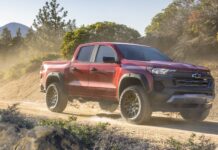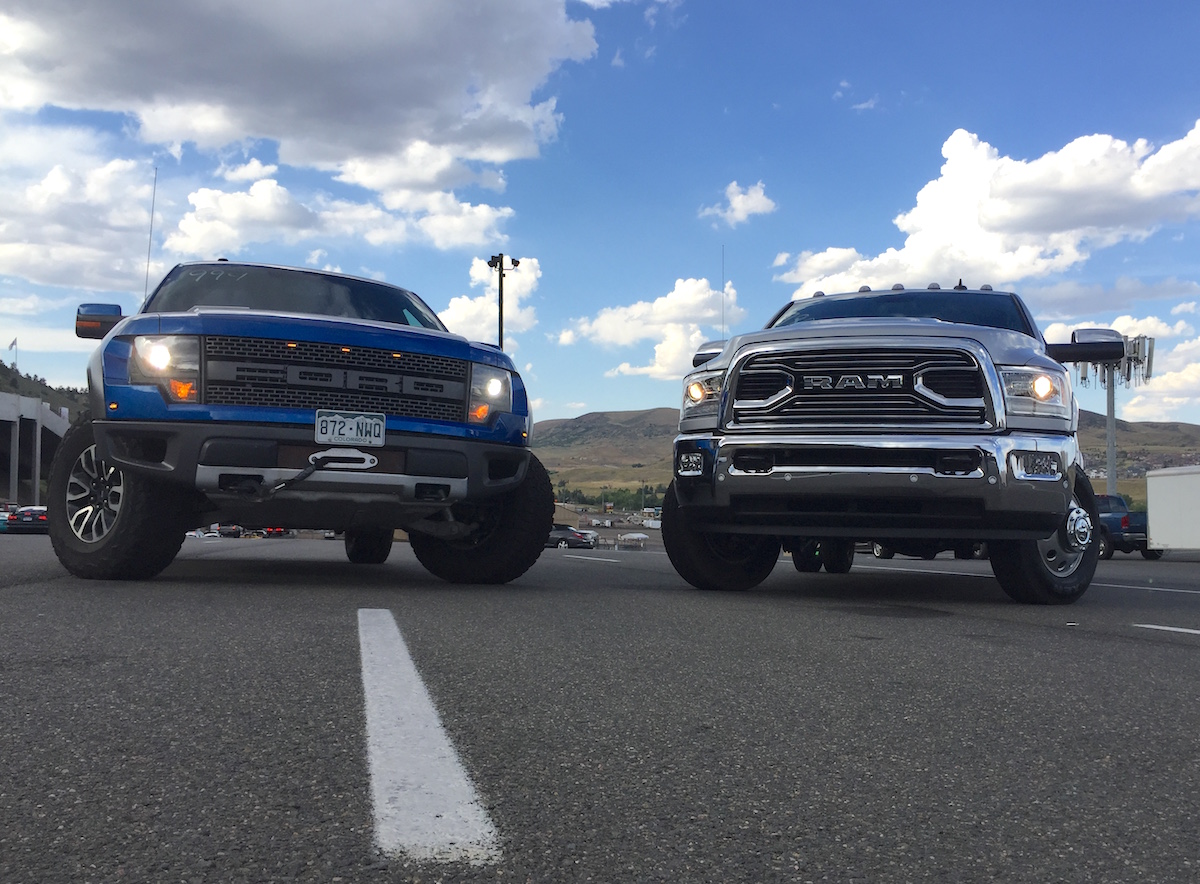
Prepare for an off-road battle with the Toyota Tacoma TRD Pro vs Chevy Colorado ZR2 Bison. Andre recently had an opportunity to compare both vehicles head-to-head off-road in Texas. The main crux of the comparison dealt with an off-road course that culminated in a difficult hill climb.
These are two very different trucks. They offer different types of driving dynamics, unique options and both have their fns. This posts highlights some of the off-road capability specifications of each vehicle.
2019 Toyota Tacoma TRD Pro
The Toyota Tacoma TRD Pro, which will get a few updates for 2020, represents one of the best selling vehicles in its class. Other than the ancient Nissan Frontier, it is one of the oldest midsize trucks in our market. It still has a well-earned reputation for rugged reliability.
The Toyota Tacoma has a 278 horsepower, 3.5-liter V6 that makes 265 lbs-feet of torque. It’s paired to either a six-speed manual or six-speed automatic transmission. A four cylinder engine is offered, but not in this trim level.
Its Fox suspension and locking rear differential make it remarkably capable off-road, as do its technical numbers.
With a wheelbase of 127.4-inches and a overall length of 212.3-inches, the Tacoma isn’t the largest of the midsize trucks, but its 75.2-inch width is among the widest. Its approach angle is 35-degrees, 23.9-deg breakover and 26-deg departure angles are fairly impressive. The Toyota’s 9.4-inches of ground clearance is better than the Bison’s by a fair margin.
Less impressive is the Goodyear Wrangler off-road tires (with Kevlar) that come standard. We feel that they make a good road tire, but lack bite off-road. It may be the TRD Pro’s weakest link.
2019 Chevrolet Colorado ZR2 Bison
The Chevrolet Colorado ZR2 Bison comes with a 308-hp 3.6-liter V6 that makes 275 lb-ft of torque. If you want better torque and efficiency, there is a 186 hp, 2.8-liter turbodiesel that makes 369 lb-ft of torque. The diesel gets a six-speed automatic while the gas V6 comes with an eight-speed automatic transmission.
A manual transmission is not available for the ZR2/Bison.
Sporting a unique suspension (in this segment) the Bison has a Multimatic Dynamic Suspensions Spool Valve setup. It’s very compact and the overall stability is superb. It also has rear AND front locking differentials. Only the Jeep Gladiator Rubicon has a front locker.
The wheelbase of 128.5-in in length and the overall length of 212.7-inches are very close to the Toyota’s measurements. The Bison’s width of 74.3-in is about an inch narrower. The Bison has an approach angle of 30-degrees, which is slightly lower than the regular ZR2 – which has a smaller front bumper. While we don’t have a precise breakover angle, we do know its departure angle is 23.5-deg. The Bison’s 8.9-inch ground clearance is on the lower end of the midsize off-road truck segment.
Both vehicles are armored underneath; however, the Chevrolet Bison’s main attraction over its sibling, the ZR2, is it’s copious amounts of armor. The Bison has an additional 200-lbs of underbody armor. Much of that armor is boron steel.
Toyota’s armor coverage is not as comprehensive.
In this video, you’ll see these two icons put to the test. The Toyota Tacoma TRD Pro vs Chevrolet Colorado ZR2 Bison is a good challenge. Which one would you pick?
















![Which is More Reliable: 3.5L EcoBoost or 5.0L V8? [Reader Question] Second-generation 3.5-liter EcoBoost engine](https://tfltruck.com/wp-content/uploads/2016/05/Second-generation-35-liter-EcoBoost-engine.jpg)
![Which Silverado Engine to Get: 5.3L or 6.2L V8? [Ask TFLTruck] 2016 chevy silverado](https://tfltruck.com/wp-content/uploads/2015/10/2016-chevy-silverado-grille.jpg)
